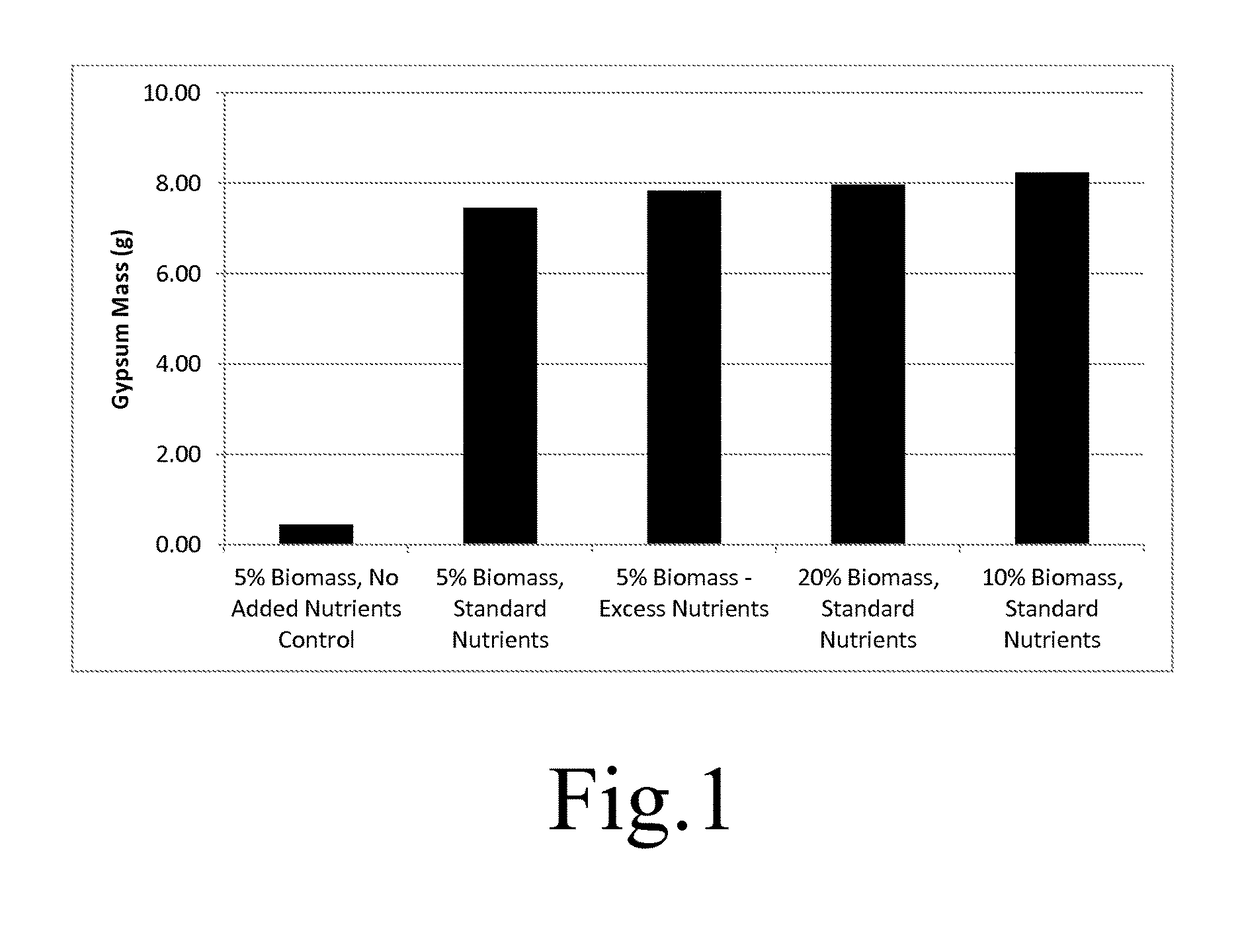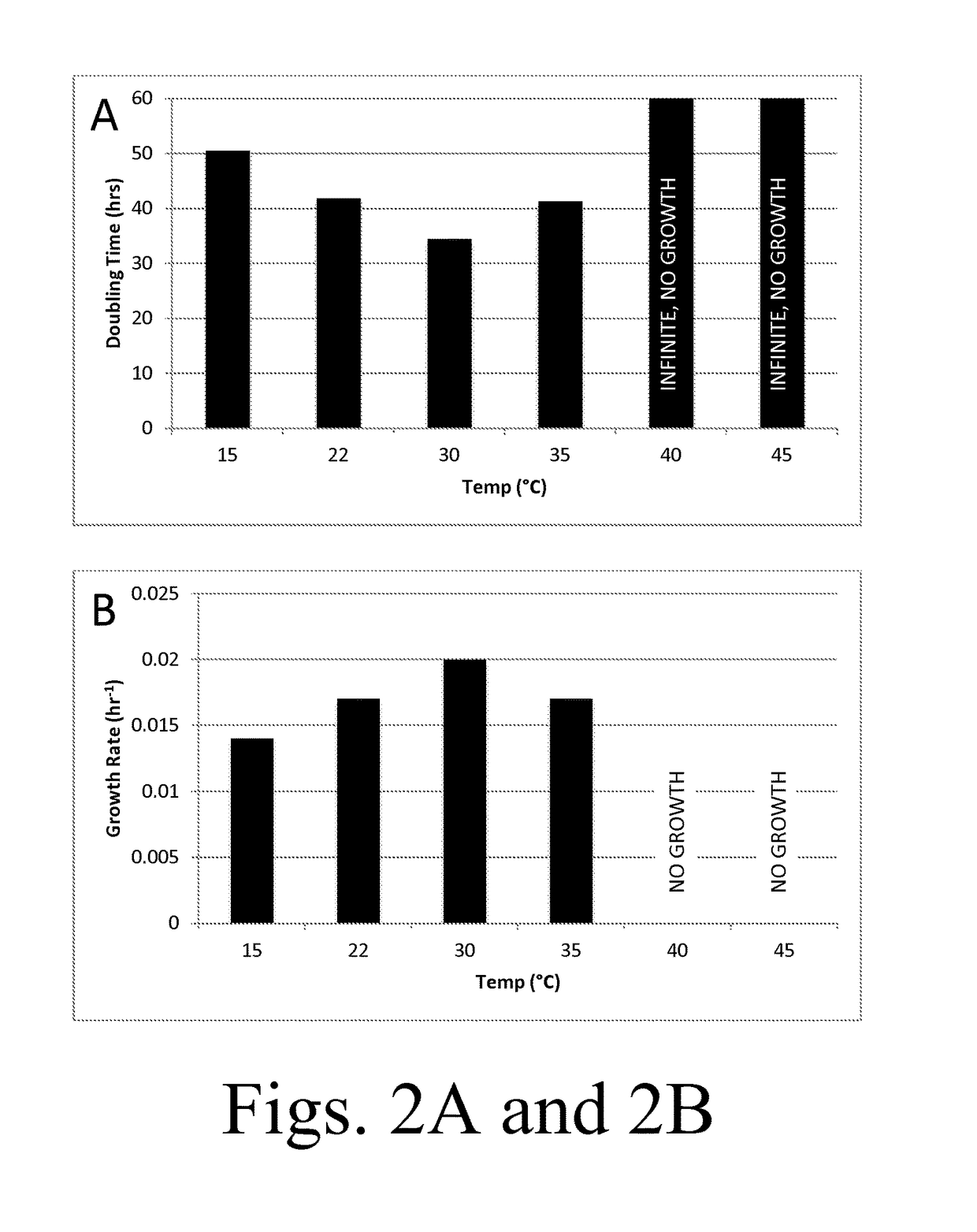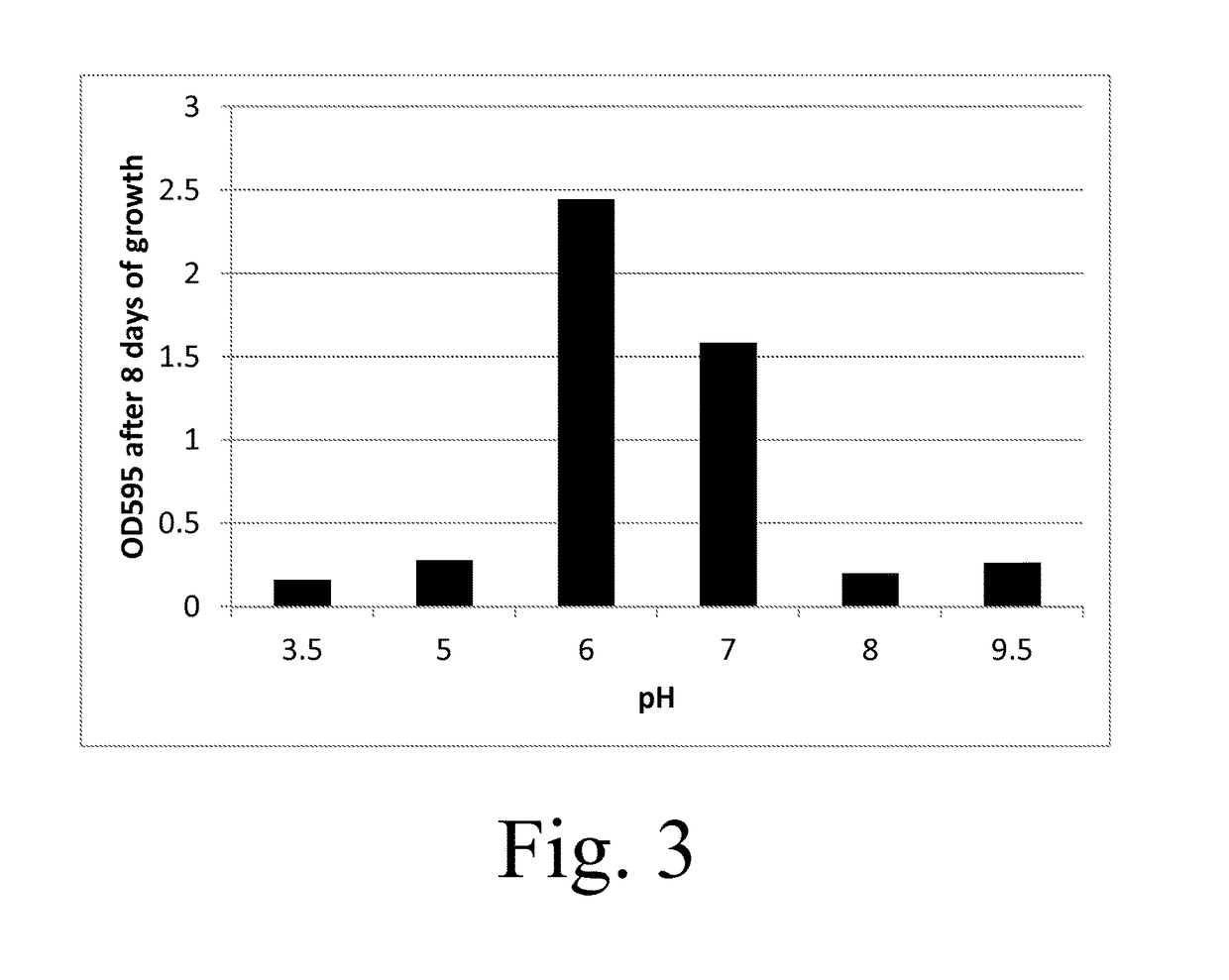Biogeochemical Transformations of Flue Gas Desulfurization Waste Using Sulfur Oxidizing Bacteria
- Summary
- Abstract
- Description
- Claims
- Application Information
AI Technical Summary
Benefits of technology
Problems solved by technology
Method used
Image
Examples
example i
[0072]To treat FGD waste (and by “treat” is meant biostimulate and / or bioaugment FGD waste product), a biosimulated FGD slurry was made by mixing an amount of FGD waste with SOB growth medium that is not supplemented with a source of sulfur. The SOB growth medium in this example had the following recipe:
[0073]4 g K2HPO4
[0074]1.5 g KH2PO4
[0075]0.02 g CaCl2.2H2O
[0076]0.1 g MgSO4.7H2O
[0077]0.3 g (NH4)2SO4
[0078]0.02 g MnSO4.2H2O
[0079]0.02 g FeCl3.6H2O
[0080]With water added to 1 liter.
[0081]The isolated SOB culture used in this example were obtained from, propagated, and maintained in sulfur-supplemented SOB growth medium made as follows:
[0082]About 4 g K2HPO4, about 10 g Na2S2O3.5H2O, about 1.5 g KH2PO4, about 0.02 g CaCl2.2H2O, about 0.1 g MgSO4.7H2O, about 0.3 g (NH4)2SO4, about 0.02 g MnSO4.2H2O, about 0.02 g FeCl3.6H2O is measured out and water is added to 1 liter.
[0083]Table 1 provides an example of the treatment achieved by the invention. Table 1 includes FGD waste slurry sampl...
example 2
[0088]This example was performed to show the superior rate of sulfite to sulfate conversion in FGD waste (to make a gypsum-enriched product) using the methods and reagents described herein. Table 2 indicates the rate of conversion that may be achieved in bioaugmented and biostimulated treatment, or treatment with biostimulation only. FIGS. 9A and 9B illustrates the benefit of SOB biomass where cell count and ATP concentration are shown to be related to the rate of gypsum formation wherein treatments forming less than 1% gypsum per day contain less biomass (lower cell counts and lower ATP; left bars of FIGS. 9A and 9B) than treatments forming more than 1% gypsum by weight per day (right bars of FIGS. 9A and 9B).
TABLE 2Rates of SOB Mediated Reactions with FGD waste.Rate of GypsumRate of Calcium SulfiteRate of CalciumFormationHemihydrate ConversionCarbonate RemovalTreatment% / daymg / kg · day1R2% / daymg / kg · day2R2% / daymg / kg · day3R2Bioaugmented +1.6116,1000.911.2812,8000.78000.73biostimul...
example 3
[0091]This example describes the method used to derive isolated SOB culture. FGD waste product from a coal-fired generating plant is collected and made into a slurry by adding the FGD waste to sulfur-supplemented SOB growth medium. The sulfur-supplemented SOB growth medium can be prepared as follows:
[0092]10 g Na2S2O3.5H2O, 3.0 g KH2PO4, 0.2 g MgSO4.7H2O, 0.2 g CaCl2.2H2O, 0.5 g (NH4)2SO4, 0.02 g MnSO4.2H2O, 0.02 g FeSO4 in 1000 ml distilled water with pH 6.0.
[0093]The SOB in the FGD waste product is a consortia of bacteria containing chemolithoautotrophic sulfur oxidizing bacteria capable of oxidizing sulfite to sulfate in a mineral environment to yield an end product low in calcium sulfite. The method in this example enriches these chemolithoautotrophic sulfur oxidizing bacteria, selects the cells who have undergone random mutations to efficiently utilize the sources in the sulfur-supplemented SOB growth medium for nutrients, and selects for the appropriate bacteria cells (e.g., t...
PUM
| Property | Measurement | Unit |
|---|---|---|
| Temperature | aaaaa | aaaaa |
| Temperature | aaaaa | aaaaa |
Abstract
Description
Claims
Application Information
 Login to View More
Login to View More - R&D
- Intellectual Property
- Life Sciences
- Materials
- Tech Scout
- Unparalleled Data Quality
- Higher Quality Content
- 60% Fewer Hallucinations
Browse by: Latest US Patents, China's latest patents, Technical Efficacy Thesaurus, Application Domain, Technology Topic, Popular Technical Reports.
© 2025 PatSnap. All rights reserved.Legal|Privacy policy|Modern Slavery Act Transparency Statement|Sitemap|About US| Contact US: help@patsnap.com



